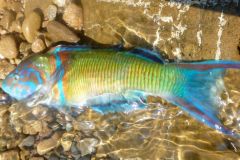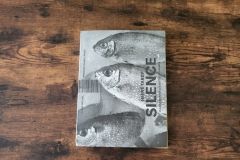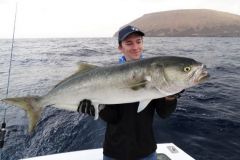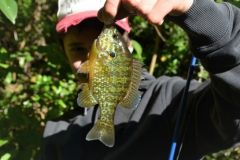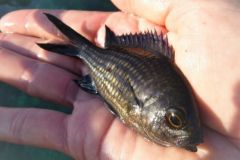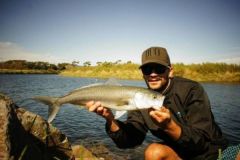Scientific name
Pristipomoides multidens (Day, 1871)
Morphology
The golden-striped snapper has an elongated, robust body with a depth of about one-third its length. The space between the eyes is flat, and it has a slightly protruding lower jaw. The upper and lower jaws have an outer row of conical, fang-like teeth.
The dorsal fin has 10 spines and 11 soft rays, while the anal fin contains 3 spines and 8 soft rays. The bases of the dorsal and anal fins are devoid of scales, and the last soft ray of each fin is extended into a short filament. The pectoral fins are long, extending to the anus. The caudal fin is forked.
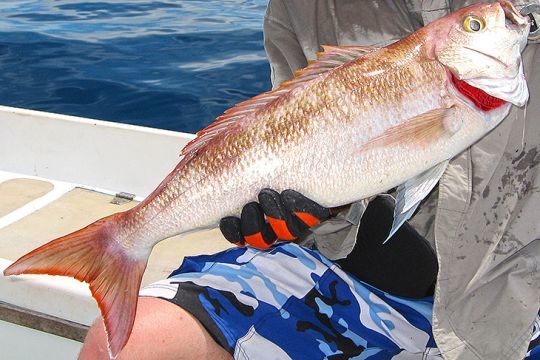
The overall color is yellowish to pale pink, with 6 interrupted golden stripes on the flanks. The side of the muzzle and cheek have a pair of golden stripes edged in blue.
Fishing spots
It is found throughout the Indo-Pacific. It can be found along the east coast of Africa, in Tanzania, Mozambique and South Africa, in the Red Sea and across the Indian Ocean to the Pacific, from Japan to Australia.
It is fished in deep water at depths of 50 to 150 m, although it can tolerate depths of up to 350 m!
Striped snapper fishing techniques
The golden-banded colas is a predatory species that feeds on fish, crustaceans, squid and gastropods. It evolves on the bottom on hard, rocky and uneven substrates. It is mainly fished with a longline. Choose a two-stack rig with a piece of diced oily fish. They also bite on jigs.
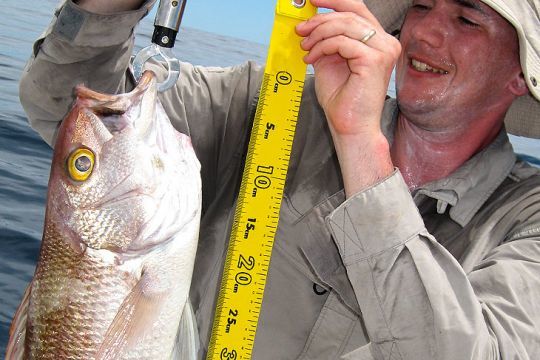
Reproduction
Some studies suggest that this species is a sequential breeder. When these fish reproduce, eggs are dispersed in open water, and females lay between 296,000 and 2,800,000 eggs per year. It is thought that the pelagic larval phase lasts 40 days, as is the case for the majority of Lutjanidae .
Size and weight
- Legal minimum catch size: none
- Size at sexual maturity: 42 cm
- Average height: 65 cm
- Maximum height/weight: 90 cm âeuros 7 kg (30 years)
- World record: none
Good to know
The golden-striped snapper lives in shoals on hard bottoms and at the foot of breaks.






